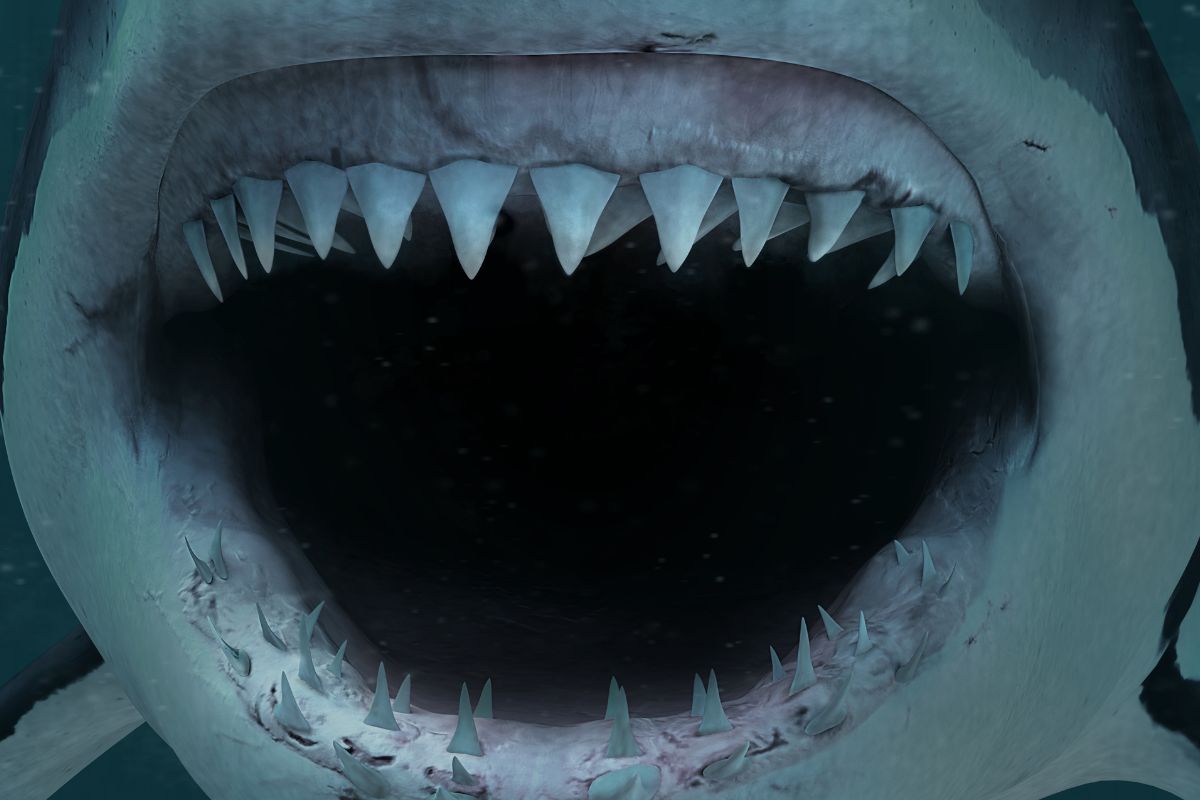Of all the physical characteristics that make up sharks, their teeth are perhaps the most formidable, not to mention the most famous.

When we think of movies and shows that depict sharks, there is one element of the body that is always highlighted – the most famous shark of all time wasn’t named “Jaws” for nothing!
You may be wondering, however, just how many teeth sharks truly have, and whether these are truly as deadly as we have been led to believe?
We took a closer look at the truth behind shark teeth – all while keeping a safe distance!
Do All Sharks Have Sharp Teeth?
The first thing you might notice about sharks is that they have sharp teeth – but did you know that not all shark teeth are created equal?
There are four main types of shark teeth, and the exact type that a shark has will depend largely on the diet that they eat.
The four main types of shark teeth include:
Dense Flattened Teeth
These teeth are typically found in shark species that spend the majority of their time at the very bottom of the ocean, and this includes species such as nurse sharks.
The diet of sharks in this region usually consists largely of elements such as crustaceans, turtles, and crabs, and so flatter, dense teeth are extremely useful for cracking open tough exterior shells and cases on these creatures.
Sharp, Needle-Like Teeth
As the name suggests, these teeth are very long and razor-sharp, and, perhaps unsurprisingly, this type of tooth is often seen in larger predatory sharks like tiger sharks, bull sharks, and hammerhead sharks.
These teeth are used to puncture prey items before they can escape, and they also help to tear apart large pieces of meat when feeding.
The long, narrow shape of the teeth means that fish and small marine creatures can be held onto, even if they have thin or narrow bodies.
Sharks with this type of teeth may even be able to capture and contain smaller sharks with relative ease.
Pointed Lower Teeth, and Triangular Upper Teeth
Sharks with pointed lower teeth and triangular upper teeth are best at biting larger prey, and sharks with this type of teeth tend to favor whales, dolphins, and seals as the main source of their prey.
Their teeth allow them to cut larger prey into smaller pieces and tend to have serrated edges which offer an incredible amount of power.
Not surprisingly, the great white falls into the category of sharks with this tooth type.
Non-Functional Teeth
The fourth type of teeth are non-functional teeth and, as the name suggests, are most commonly found in sharks who rarely, if ever, use their teeth, including basking and whale sharks.
Rather than use sharp teeth to capture their prey, these sharks will open their mouths wide and swim towards their prey.
Smaller creatures are then sucked into the mouth, and the water is filtered back out – granting these sharks the name “filter feeders” – and the sharks swallow their prey.
The sharks with this tooth type are generally considered the most harmless, as they do not bite their prey.
How Many Teeth Do Sharks Have?
One of the main features that help sharks to secure their place as the ultimate predators are the number of teeth that they have in their mouths.
On average, the majority of sharks can have between 50 and 300 teeth at any one time, and these are arranged in rows. If a tooth at the front drops out, the one behind will simply replace it.
The teeth of sharks are counted along the jawline in rows, and in series from the outside of the jaw moving in.
The average figures here are fifteen rows and five series, but this can seriously vary from shark to shark.
Sharks can lose teeth due to wear and tear over time, and some sharks will actually shed
teeth throughout their lives. This happens because the teeth are constantly growing and need to be replaced, and sometimes the shark will just get tired of having all those extra teeth cluttering up its mouth.
What Is The Bite Force Of A Shark?

A shark’s bite force is measured by how much pressure it can exert on its prey.
When measuring the bite force of a shark, scientists look at the size of the animal and measure the maximum pressure that the shark can apply on its prey.
As you might expect, the largest animals have the strongest bites, and the biggest shark has the strongest bite force.
However, there is no specific measurement for what constitutes a strong bite force, so it is hard to say exactly how powerful a particular shark is.
One of the main differences between sharks and other animals is the arrangement of the jaw.
The majority of predators have an upper jaw that is fixed directly to the skull, and this can impact the force of the bite.
Sharks, on the other hand, have their upper jaw below the skill, and it can be totally detached when they are ready to attack, allowing them to use the whole mouth.
Once ready to attack, most sharks will go in with their bottom teeth, allowing them to grab the prey and pin it in place, and then use their top jaw to crash down, killing the prey.
You may assume that a great white shark has the largest bite force, and this is a common misconception.
While great whites have the edge in terms of size, and so a larger physical bite, the bull shark actually takes the crown in terms of force – as an example, a bull shark of 9 feet will have a bite of 478 pounds, while an 8-foot great white will have a bite force of 360 pounds.
Final Thoughts
Of all the elements that make up a shark, the teeth are perhaps the most feared – and it is easy to see why!
Shark teeth are more than merely razor-sharp, however – they are complex and fascinating, and form a key element of the sharks’ ability to hunt and survive.
- Is It Possible For A Shark To Swim Backwards? - August 2, 2022
- Are Leopard Sharks Dangerous? - August 2, 2022
- What Are The Differences Between Shark And Dolphin Fins? - August 1, 2022








